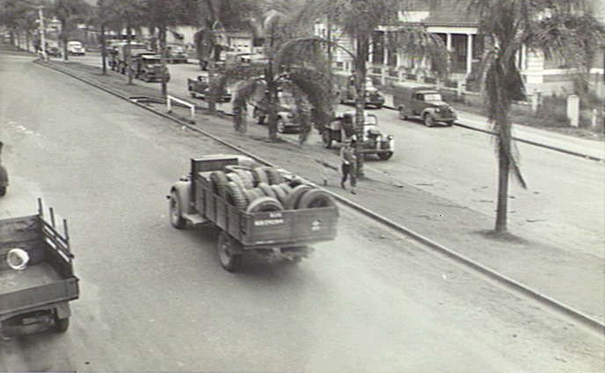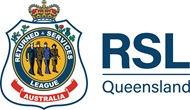
A roadtrip through wartime Queensland
03 August 2020- History & commemoration
From Cape York to Brisbane, our state is rich in sites of military significance.
With the significant role Queensland played in Australia's efforts during World War II, many towns and locations have a story to tell about their military history. Here, we take you on a road trip of some of the WWII sites in Queensland that you can still visit today.
Stanley Island
Beginning the surveillance network along Queensland’s coast, Stanley Island was the location for No. 45 Radar Station and RAAF camp, built in 1942. Situated among the Flinders Islands off the coast of Cape York, the radar station on Stanley Island sat atop a hill above the beach, and the remains of camp facilities and concrete paths are still visible today.
Fitzroy Island
No. 28 Radar Station was built on Fitzroy Island off Cairns in 1942, atop the highest peak on the small island. The station, along with coastal artillery gun emplacements on Cape Grafton, protected the Grafton Passage by monitoring all aircraft and shipping activities into and out of Cairns.
A basic lighthouse was built in 1943, and a camp at the foot of the lighthouse road housed Air Force and Navy troops. The facilities were dismantled after the war ended; however, a lighthouse stands on the site and is frequented by visitors to the island.
Atherton Tablelands
While Townsville is known as the garrison city of north Queensland, the Australian Army’s headquarters shifted to the town of Atherton in December 1942, with military camps, mess kitchens, hospitals, an airfield, army farms, entertainment halls and a war cemetery established in the area.

It was an ideal location to base personnel and equipment closer to New Guinea, and troops were able to continue jungle training in a more comfortable climate, while others received treatment for malaria. Over 100,000 soldiers were stationed throughout 160 locations across the Atherton Tablelands during WW2.
Dunk Island
Another significant post of Australia’s coastline surveillance network was an airstrip and radar station built on Dunk Island. The No. 27 Radar Station was a light-weight air warning radar established on the highest point on the island, Mount Kootaloo.
Those staffing the station were housed at the island's resort until their shifts when they would trek the slopes along the track forged during the construction of the station to the top Mount Kootaloo. The station was demolished in 1945, but the rusty remnants of the air warning aerial are still in place atop Mount Kootaloo.
Magnetic Island
Located close to Townsville, which housed a significant military base and an ideal harbour for shipping, Magnetic Island hosted a signal station and coastal battery to protect the harbour and control the shipping activities.
Searchlights were installed to spot aircraft flying at 30,000 feet, and Australian Coast Artillery Units operated the fortification complex until 1945. Remnants of the radar and signal stations, searchlight tower, command post and ammunition store are still accessible by visitors.
Coominglah State Forest
Heading south and inland, the Coominglah State Forest is located west of Bundaberg and has a different story of its part in WWII; it served as a location for detention centres housing German and Italian prisoners of war. The POWs built roads through the forest, which had begun being logged in 1935.
K’gari (Fraser Island)
Unlike the other islands listed, K’gari, or Fraser Island as it was known, wasn’t home to a defence battery. Instead, the island hosted the Fraser Commando School which trained the Special Operations Australia Unit, known as Z Special Unit or Z Force.
Over 900 personnel went through the training program between October 1943 and August 1945, learning unarmed combat, jungle craft, demolitions and weapons training. Some remnants of the training facilities are still visible today, located on the western side of the island.
Bribie Island
Fort Bribie, located on Ocean Beach on the north-eastern side of Bribie Island, was the major naval defence station of Moreton Bay during the height of WWII. Operational in early 1942, Fort Bribie served as support for the Australian Navy’s defence against light raiding warships, acting as the Examination Battery where ships were required to identify themselves.
The fortifications included searchlight posts, mine control huts, gun placements, a signals operation room, plotting room, observation post and water tank. The building was abandoned at the end of the war and dismantled in the 1950s, however the ramparts of Fort Bribie are still standing in the eroding sands.

‘Nyrambla’
One of Australia’s most significant sites of military history sits in the unassuming Brisbane suburb of Ascot, at 21 Henry Street. Known as ‘Nyrambla’, the grand Queenslander built during the late 1800s was occupied by the US Army from 1942 and become the Australian headquarters of Central Bureau, a secret organisation tasked with decoding Japanese radio transmissions.
(Read about the nun who served in one of the most secretive units of WWII, based at ‘Nyrambla’)
Computers of the day were installed in the garage to break code, with the most significant intercepted signal leading to the ambush of Admiral Yamamoto, who had planned the attack on Pearl Harbour.
After the war, the house returned to being a residence and is currently privately owned.
MacArthur Chambers
Brisbane’s city centre was the headquarters for US General Douglas MacArthur during WWII, with his offices set up in the Australian Mutual Provident Society (AMP) building on Queen Street from mid-1942. As well as General MacArthur’s offices, the nine-story building housed signal units, a communication centre and a code room, and served as headquarters for the US Navy and RAAF Command.
The heritage-listed building, now known as MacArthur Chambers, is today home to the MacArthur Museum, apartments and a retail and food precinct.
Brisbane City Hall
The tallest building in Brisbane at the outbreak of the war in 1939, City Hall became a hub for civil defence activities during WWII. The building hosted meetings of allies, war bond rallies, a childcare centre for war workers, temporary offices for war organisations, receptions for dignitaries and the RSL Welfare Rooms (shown below).

The adjoining King George Square also lent itself to the cause, with military parades and salvage drives being held there, as well as providing a quiet spot for relaxation in the city’s centre. King George Square continues to serve as an events and activity hub, while visitors to City Hall can tour the historic building, learn about its history and view the Museum of Brisbane exhibitions.
Brisbane's air raid shelters
During WW2, many air raid shelters or bomb shelters were built throughout Brisbane’s city and suburbs to provide protection for civilians and military personnel from air attacks. Elaborate shelters were built in locations such as Elizabeth Street, Ann Street and North Quay in the city, near the Howard Smith Wharves under the Story Bridge, and even on private properties, like an eight-foot deep shelter that was built in a backyard in Annerley.
Development over the past 75 years has seen some of the shelters demolished, while some of the humble constructions that are still standing now serve other purposes, such as a bus stop near the Teneriffe Ferry Terminal on Commercial Road, or a picnic spot at a small park near Flower Street in the suburb of Woolloongabba.
These are far from the only WWII sites of significance dotted around our state. Do you know of one near you?
Photographs courtesy of Australian War Memorial and State Library Queensland.
Related News
Loading

